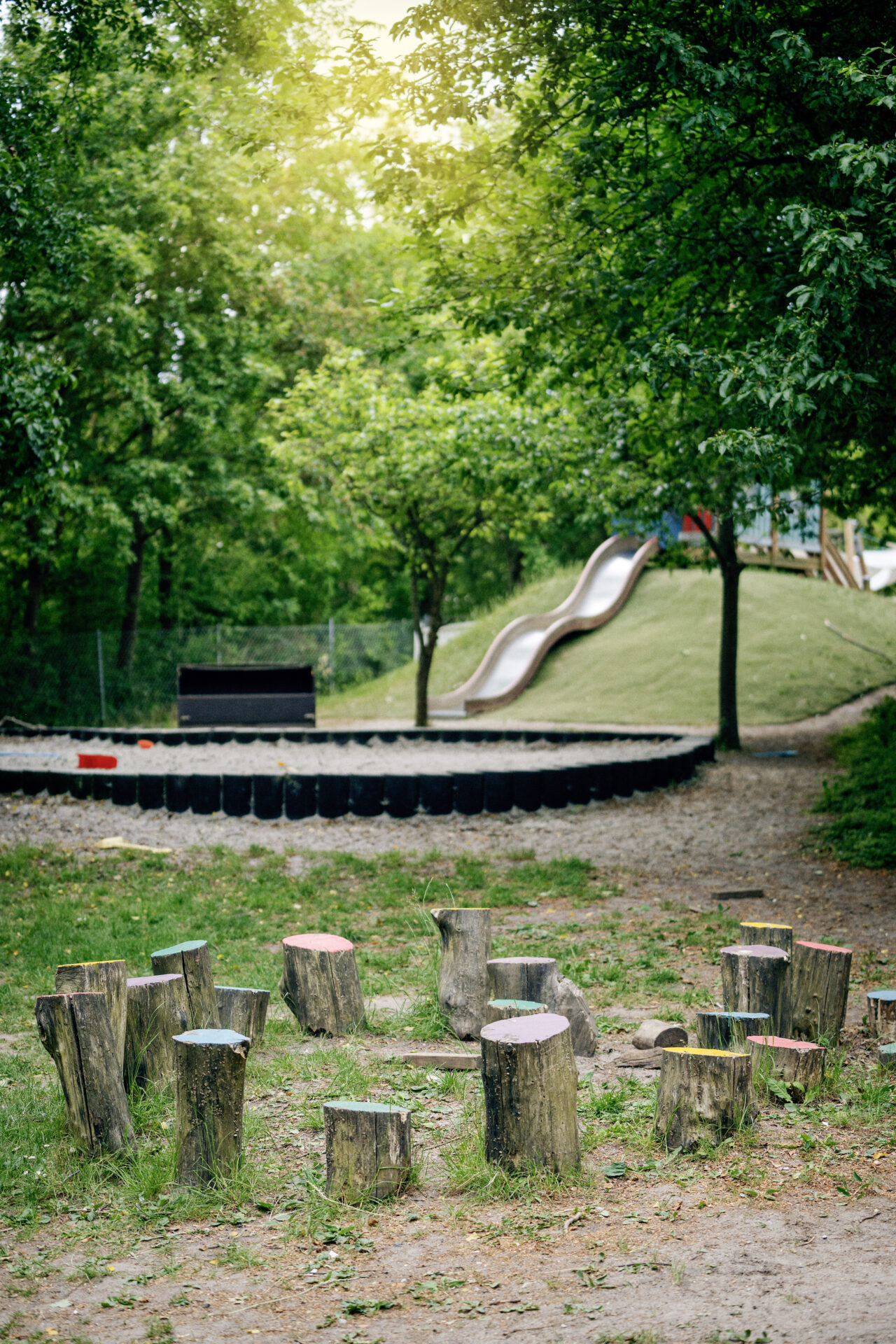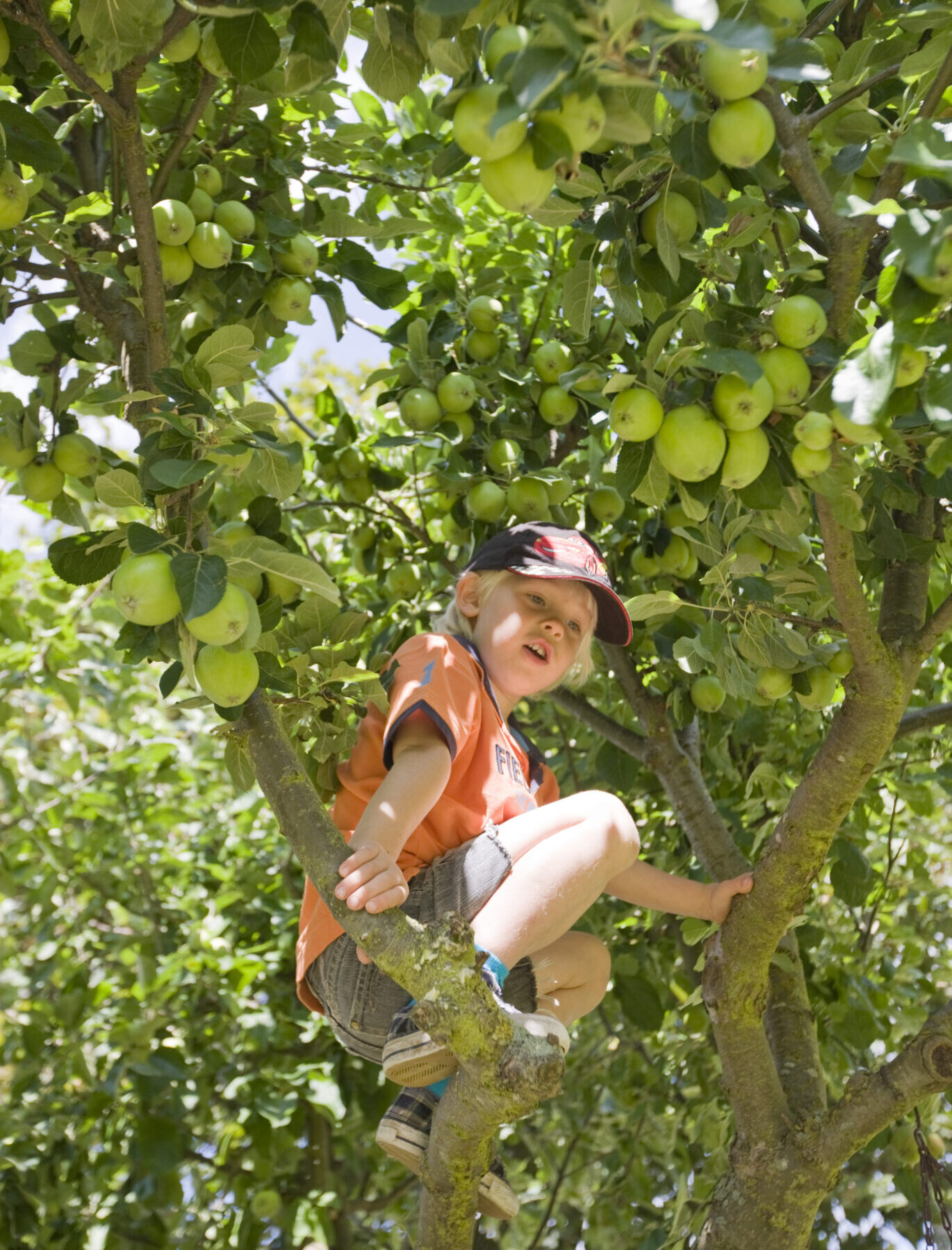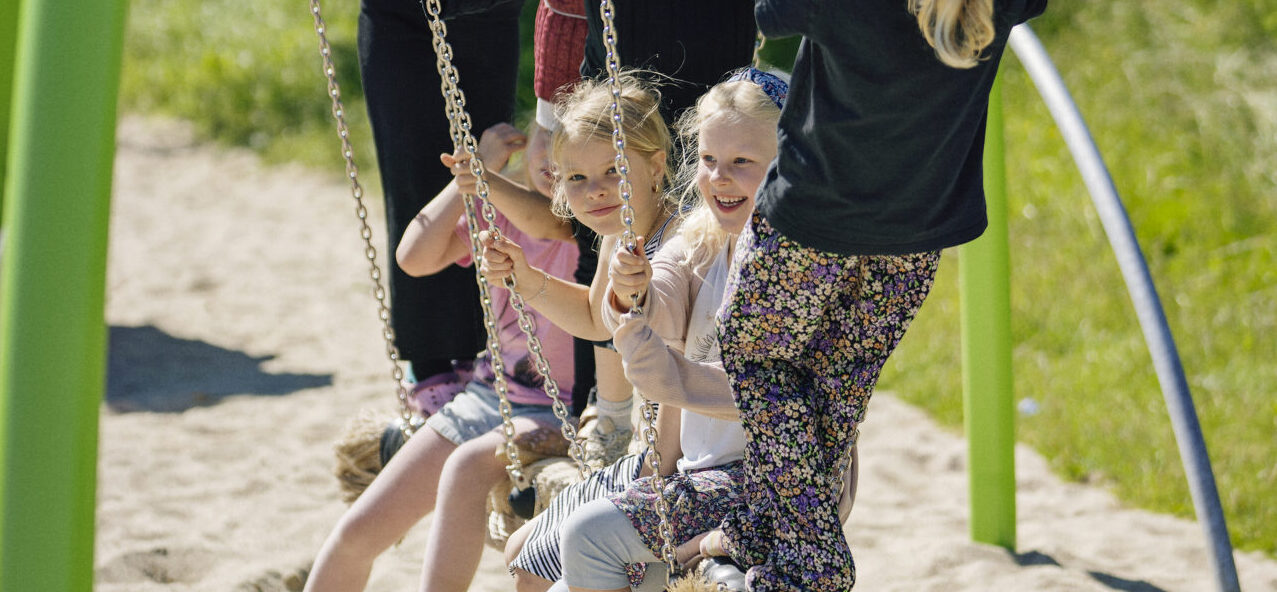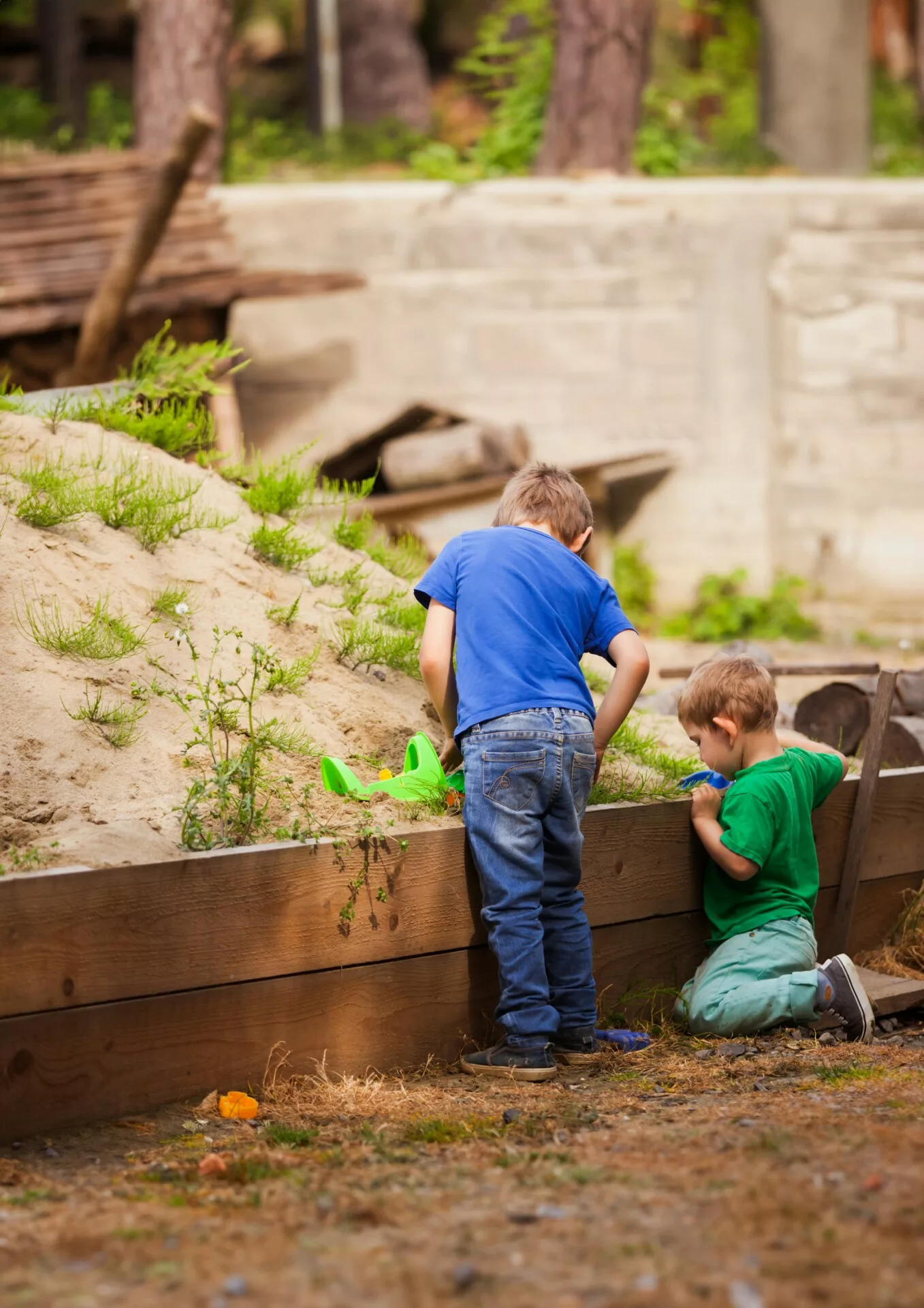
Challenges in designing natural playgrounds for everyone
Introduction and aim
Research has shown that natural play spaces, with integrated natural elements such as trees, plants, rocks, and water, offer numerous benefits for children and communities. These spaces are designed to attract diverse users and offer a wide range of play opportunities that go beyond physical play, promoting inclusivity.
However, these spaces are often less accessible to marginalized communities and children with disabilities.
In this brief, we present key findings from a study that investigated natural playgrounds in Calgary, Canada, focusing on access, equity, and inclusivity. The researchers conducted walking/playing and online interviews with 51 participants, including children, caregivers, playground designers, and municipal workers.
The study focused on exploring barriers and challenges in the development and usage of natural play spaces.
These findings are relevant for urban, park, city, and playground planners and architects, particularly those involved in the design and development of public spaces. It may also be relevant for those involved in decision-making processes related to urban development and public spaces that promote equity and inclusivity.
There is a need for greater understanding of the processes that shape the accessibility of natural play spaces and the multiple experiences of people within natural play spaces
Key results
The study found several challenges in ensuring equitable development and accessible usage of these types of play spaces:

Diversity of Users and Usage
Natural playgrounds serve as ‘integrational spaces’, attracting not only children but also caregivers, adolescents, and adults. Although most participants reported positive experiences with shared playground usage, issues like vandalism and conflicting use patterns were also mentioned.
Physical Access Issues
There are challenges in ensuring equitable development and accessible use for marginalized communities and individuals with disabilities. Physical accessibility is a major concern as ground surface materials (e.g., loose rocks and sand) and playground layout can be barriers for those with disabilities.
Economic Barriers
High costs for the development and maintenance of natural playgrounds and reliance on community funding can limit the creation of such spaces.
Community Funding and Volunteer Work
The study highlights that community funding, grants, and volunteer work, often performed by stay-at-home parents with specific skills, are essential in creating and supporting natural play spaces.
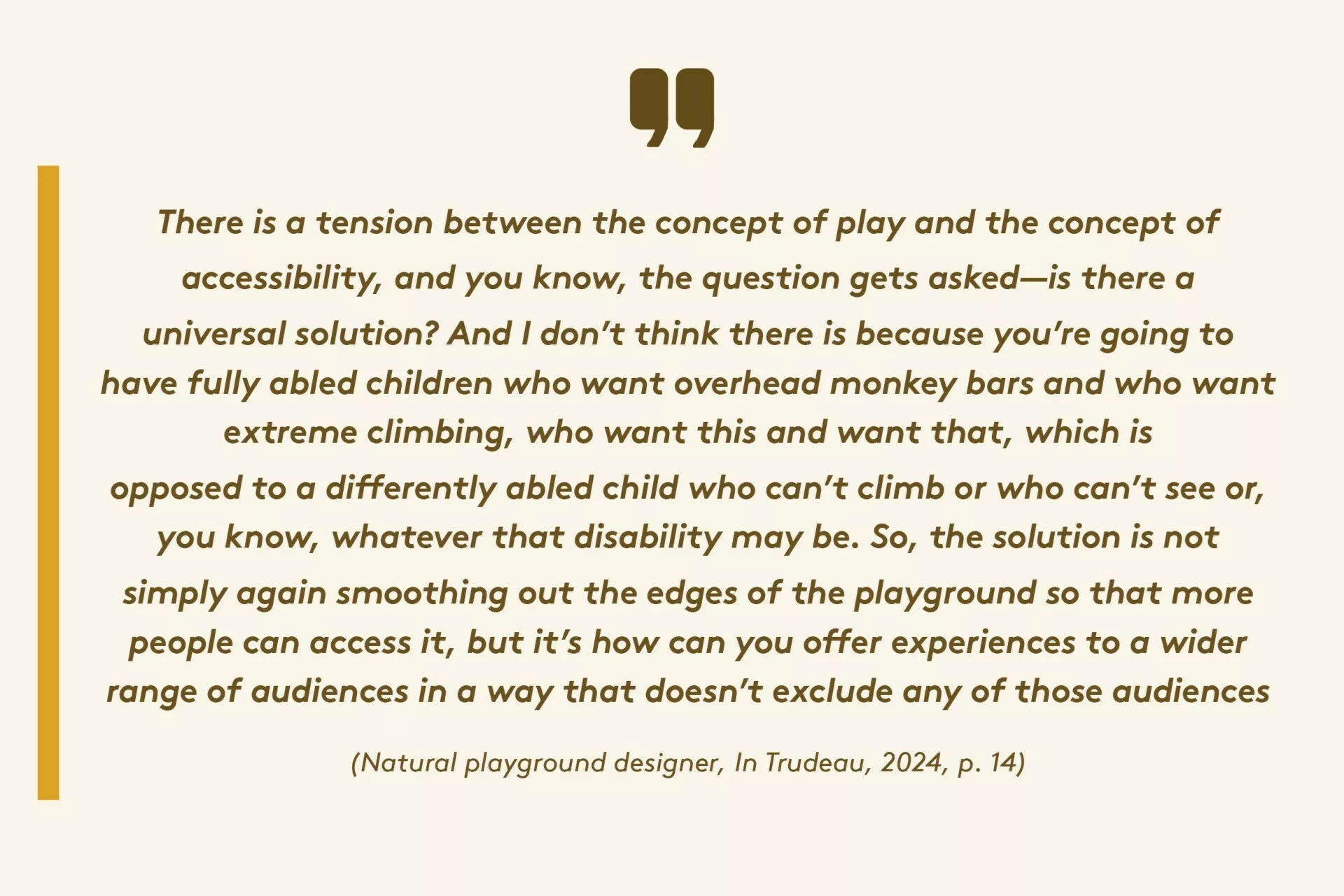
Key take home messages
Consider different needs and contexts: The study suggests that there is a need for careful consideration of different needs and contexts to create more inclusive and accessible natural playgrounds.
Support: It is suggested that municipal and non-profit support, maintenance funding, and participatory planning with diverse members of the community are crucial for equitable playground development.
Focus on the balance between risky play versus physical accessibility: The study recommends a balance between different playground features to accommodate different needs.
All our briefs are accessible through our website, www.playgroundresearch.org.
On the website, you’ll find a compilation of briefs that offer a clear comprehension of research findings and their implications for future research and practical application.
You can also download a printable PDF version of this brief to facilitate sharing.
Downloads
Please click on the download link below to obtain a copy of each file
Main Editors


Similar Briefs
Projects
Explore our institute’s active engagement in developing playgrounds’ future through innovative research and current projects.
Briefs
We are dedicated to sharing valuable insights from research studies and reviews through concise and accessible publications.
Articles
Explore our article database for a comprehensive array of global research and insights, offering diverse perspectives and knowledge.
News
Stay up-to-date and engaged through the latest news, project updates, events, and activities specific to playground research.
